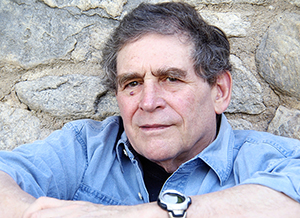
Alan Weisman is one of the faculty at this year’s Sitka Symposium. (Photo courtesy of the Island Institute)
What would the world look like if every human on the planet suddenly vanished?
Alan Weisman is a journalist and author, and one of this year’s faculty at the Sitka Symposium. In his 2007 book, The World Without Us, he set out to answer that question, traveling the globe to find out what would happen if nature were suddenly left to its own devices.
Weisman says he wrote the book not because he wants a world without human beings, but because he wants a world with us.
“My hope was that readers would think, ‘OK, that’s so beautiful, how can we add ourselves back into this picture, only in harmony, as opposed to constant combat with the rest of nature?'” he says.
The World Without Us was inspired by a visit to the Chernobyl Exclusion Zone in 1993. Weisman recalled walking the site with a team of scientists, heavily swathed in protective gear. The zone has been off-limits since the nuclear disaster in 1986, one of the worst in history.
“But it looked rather amazing,” Weisman says. “The foliage had been growing, I mean people’s neatly trimmed hedges around their houses in the towns of Chernobyl and Pripyat were now growing wild, and they were covering the walls and sometimes even the roofs of the houses. Flowers and tree roots were breaking up through the streets. And all of these animals were now crowding in where human beings now feared to tread. It looked, frankly, natural and gorgeous, like the Garden of Eden was being restored. Then of course you’d turn on a Geiger counter and you would learn to the contrary.”
From a world with no people, Weisman turned to examine a world with too many. His book Countdown came out in September 2013, and asks a different question: how many people can the planet — and its atmosphere — reasonably handle?
After reporting trips to 21 countries Weisman had his answer: somewhere between 1.5 and 3 billion people. That’s compared with the more than 7 billion who currently share the earth.
So, what’s the solution? Drastic measures? A one-child policy?
Weisman says no. The answer, he says, is expanding access to contraception and education for girls and women. The two combined have brought down birth rates around the world — often faster than anyone predicted was possible.
And Weisman says that the people leading the charge on these issues are often the ones staring environmental disaster in the face. Take the Phillipines.
“They have had explosive population growth,” he says. “But it’s the fishermen who are turning that around. They instituted family planning programs in all the fishing villages, around all the islands of the Philippines, long before the government finally started to get on board with this thing, because, as any fishermen here in Sitka can tell you, if the number of fishermen exceed the fish stocks out there, you’re going to lose your treasure.”
Stories like that have left Weisman more hopeful than when he started writing his book. When it comes to big environmental challenges like climate change, he says, it turns out there are some things we already know how to do.
“You know, we don’t know how to stop all these carbon emissions right now,” he says. “But we do know how to bring down the number of carbon emitters. And that to me is very hopeful.”
Alan Weisman will join Luis Urrea for a reading tonight, Thursday, July 24, at 7 PM at the Odess Theater. The reading is open to the public, and admission is $10.






























